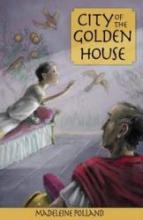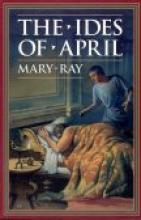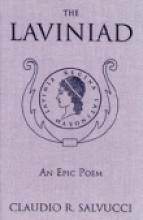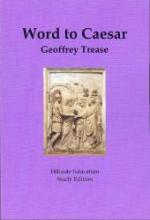Ancient Rome Historical Fiction
The City of the Golden House
Subject(s):
Setting:
Grade / Age level:
Review:
Reviewed by:
First reviewed:
12-29-06
The Ides of April
Subject(s):
Setting:
Grade / Age level:
Review:
When Hylas, a slave, discovers the death of his master, a Roman senator, he realizes that he is in dire straits. The harsh laws of ancient Rome dictate that all household slaves be killed should a murder be discovered in that home. Hylas enlists the help of Camillus Rufus, a tribune, to help clear the slaves of the judge's inevitable verdict of 'guilty!'
The Ides of April is an intriguing book set in 62 A.D. It's a classic murder mystery. The author, Mary Ray, paints a vivid picture of life in ancient Rome. Students will gain much technical information about the time period - social status, architecture, religion, laws, the games, and the working of a household.
Though the book is recommended for children "14 years and up", younger children would enjoy it as a read-aloud. It's on the "highly-recommended list" at our house.
The Ides of April is an intriguing book set in 62 A.D. It's a classic murder mystery. The author, Mary Ray, paints a vivid picture of life in ancient Rome. Students will gain much technical information about the time period - social status, architecture, religion, laws, the games, and the working of a household.
Though the book is recommended for children "14 years and up", younger children would enjoy it as a read-aloud. It's on the "highly-recommended list" at our house.
Additional notes:
Copyrights 1974/1999
Reviewed by:
First reviewed:
1998-99
The Laviniad
Subject(s):
Setting:
Grade / Age level:
Review:
The Laviniad is a truly unique work; the story is unique and the book itself is unique.
First the story: The author successfully writes in the style of the ancient epic in modern English, picking up the thread of the story of the Aeneid. The Laviniad takes up the tale of the Trojan settlement of Latium following the death of Aeneas. His son, Ascanius, assumes the leadership and almost immediatley must deal with the threat of Italians still hostile to the Trojan presence.
There are some pleasant similarities to the ancient epics, such as prophecies that are fulfilled in not quite the way the people expect, and the descriptions of the deaths of the heroes. The Trojans prevail in the end and Lavinia, Aeneas' widow gives birth to his child, the true and final mix of the blood of the Latins and the Trojans. Hope is restored to a people wearied by years of war and loss of life. Lovers of classic tales will really appreciate the poetry and the plot.
The poem reads easily and naturally with the flow and flavor of the ancient epics. A complete glossary in the back will help anyone who has not read the Aeneid or the Iliad to understand the relationship of the characters and the various names of the Greeks, Trojans, and Latins. It is not, strictly speaking, a sequel, however, a knowledge of the events of the Aeneid is helpful. A highschooler could appreciate the story whether or not he has read the Aeneid.
Now the book: I learned from the publisher that the author hand makes each book, binding and all! The story is printed on parchment and handsewn, not glued. The outer cover is a light blue cloth cover. It is a beautiful, elegant edition, wonderful for gift giving.
First the story: The author successfully writes in the style of the ancient epic in modern English, picking up the thread of the story of the Aeneid. The Laviniad takes up the tale of the Trojan settlement of Latium following the death of Aeneas. His son, Ascanius, assumes the leadership and almost immediatley must deal with the threat of Italians still hostile to the Trojan presence.
There are some pleasant similarities to the ancient epics, such as prophecies that are fulfilled in not quite the way the people expect, and the descriptions of the deaths of the heroes. The Trojans prevail in the end and Lavinia, Aeneas' widow gives birth to his child, the true and final mix of the blood of the Latins and the Trojans. Hope is restored to a people wearied by years of war and loss of life. Lovers of classic tales will really appreciate the poetry and the plot.
The poem reads easily and naturally with the flow and flavor of the ancient epics. A complete glossary in the back will help anyone who has not read the Aeneid or the Iliad to understand the relationship of the characters and the various names of the Greeks, Trojans, and Latins. It is not, strictly speaking, a sequel, however, a knowledge of the events of the Aeneid is helpful. A highschooler could appreciate the story whether or not he has read the Aeneid.
Now the book: I learned from the publisher that the author hand makes each book, binding and all! The story is printed on parchment and handsewn, not glued. The outer cover is a light blue cloth cover. It is a beautiful, elegant edition, wonderful for gift giving.
Additional notes:
Binding details: Hardback with cloth covering
Reviewed by:
First reviewed:
8-12-04
Word to Caesar
Subject(s):
Setting:
Grade / Age level:
Review:
Reviewed by:
First reviewed:
5-5-06




